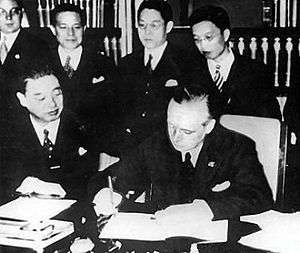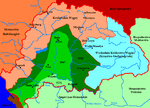Anti-Comintern Pact
|
Japanese ambassador to Germany Kintomo Mushakoji and Foreign Minister of Germany Joachim von Ribbentrop, sign the Anti-Comintern Pact. | |
| Type | Pact |
|---|---|
| Drafted | October 23, 1936 |
| Signed | November 25, 1936 |
| Location | Berlin, Germany |
| Signatories |
|
| Events leading to World War II | ||||||||||||||||||||||||||||||||
|---|---|---|---|---|---|---|---|---|---|---|---|---|---|---|---|---|---|---|---|---|---|---|---|---|---|---|---|---|---|---|---|---|
|
||||||||||||||||||||||||||||||||
The Anti-Comintern Pact was an anti-communist pact concluded between Nazi Germany and the Empire of Japan (later to be joined by other, mainly fascist, governments) on November 25, 1936 and was directed against the Third (Communist) International.
... recognizing that the aim of the Communist International, known as the Comintern, is to disintegrate and subdue existing States by all the means at its command; convinced that the toleration of interference by the Communist International in the internal affairs of the nations not only endangers their internal peace and social well‑being, but is also a menace to the peace of the world desirous of co‑operating in the defense against Communist subversive activities ...[1]
Origins
The origins of the Anti-Comintern Pact go back to the autumn of 1935, when various German officials both within and outside the Foreign Ministry were attempting to balance the competing demands upon the Reich's foreign policy by its traditional alliance with China versus Hitler's desire for friendship with China's archenemy, Japan.[2] In October 1935, the idea was mooted that an anti-Communist alliance might be able to tie in the Kuomintang regime, Japan and Germany.[2] In particular, this idea appealed to Joachim von Ribbentrop, the Special Ambassador at Large and head of the Dienststelle Ribbentrop and the Japanese Military Attaché in Berlin, General Hiroshi Ōshima, who hoped that such an alliance might lead to China's subordination to Japan.[2] Lack of Chinese interest doomed the project's original intention, but October–November 1935, Ribbentrop and Oshima worked out a treaty directed against the Comintern.[2] The Pact was to be originally introduced in late November 1935 with invitations for Britain, Italy, China and Poland to join.[2] However, concerns by the German Foreign Minister Baron Konstantin von Neurath and War Minister Field Marshal Werner von Blomberg that the pact might damage Chinese–German relations plus political disarray in Tokyo following the failed military coup of February 26, 1936 led to the Pact's being shelved for a year.[2] By the summer of 1936, the increased influence of the military in the Japanese government, concerns in Berlin and Tokyo about the Franco-Soviet alliance, and Hitler's desire for a dramatic anti-Communist foreign policy gesture that he believed might bring about an Anglo-German alliance led to the idea of the Anti-Comintern Pact being revived.[2] The Pact was initialed on October 23, 1936, and signed on November 25, 1936.[2] In order to avoid damaging relations with the Soviet Union, the Pact was supposedly directed only against the Comintern, but in fact contained a secret agreement that in the event of either signatory power becoming involved with a war with the Soviet Union, the other signatory power would maintain a benevolent neutrality.[2]
Agreement

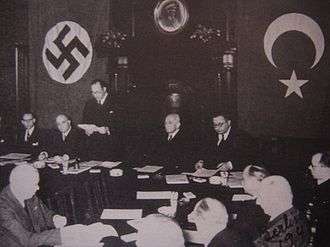
In case of an attack by the Soviet Union against Germany or Japan, the two countries agreed to consult on what measures to take "to safeguard their common interests". They also agreed that neither of them would make any political treaties with the Soviet Union, and Germany also agreed to recognize Manchukuo.
Formation of "Axis Powers"
On November 6, 1937, Italy joined the pact, Spain also joined the pact,[3] thereby forming the group that would later be known as the Axis Powers. Italy's decision was more or less a reaction against the failed Stresa Front, the Franco-British initiative of 1935 designed to keep Nazi Germany from extending beyond its present borders. In particular, both nations tried to block "German expansionism", especially the annexation of Austria, which was also in Italy's best interests to prevent. Distrustful relations and Benito Mussolini's own expansionism furthered the distance between Italy and the United Kingdom, as well as France. Italy invaded the Ethiopian Empire in October 1935, an act of unprovoked aggression that was a breach of League of Nations policy. Nevertheless, Britain and France hashed out a secret agreement with Italy to give it two-thirds of Ethiopia, the Hoare–Laval Pact. When this information was leaked to the public in Britain and France, their governments were mired in scandal and the British Foreign Secretary, Samuel Hoare, was forced to resign. Consequently, the Hoare-Laval Pact was aborted.
Attempts to improve Anglo-German relations
Earlier, in June 1935, the surprise Anglo-German Naval Agreement was signed between the United Kingdom and Nazi Germany. This marked the beginning of a series of attempts by Adolf Hitler to improve relations between the two countries, form a pact, and isolate the Soviet Union, while both the Soviet Union and Britain attempted to do the same and isolate Germany. Hitler also made an effort to influence the Poles into joining the Anti-Comintern Pact and spoke of his intention to settle territorial disputes between Germany and Poland.[4][5][6][7][8] However, Poland refused Germany's terms, fearing that an alliance with Hitler would render Poland a German puppet state. At the time, many Japanese politicians, including Admiral Isoroku Yamamoto, were shocked by the Anglo-German naval agreement, but the leaders of the military clique then in control in Tokyo concluded that it was a ruse designed to buy the Nazis time to build up their navy. They continued to plot war against either the Soviet Union or the Western democracies, assuming Germany would eventually act against either of them. Hitler's efforts to develop relations with Britain eventually failed.
Soviet-German agreement
In August 1939, Germany broke the terms of the Anti-Comintern Pact when the Molotov–Ribbentrop Pact was signed between the Soviet Union and Germany. However, by 1940, Hitler began to plan for a potential invasion (planned to start in 1941) of the Soviet Union. The German foreign minister, Joachim von Ribbentrop, was sent to negotiate a new treaty with Japan. On September 25, 1940, Ribbentrop sent a telegram to Vyacheslav Molotov, the Soviet foreign minister, informing him that Germany, Italy, Spain and Japan were about to sign a military alliance. Ribbentrop tried to reassure Molotov by claiming that this alliance was to be directed towards the United States and not the Soviet Union:
Its exclusive purpose is to bring the elements pressing for America's entry into the war to their senses by conclusively demonstrating to them if they enter the present struggle they will automatically have to deal with the four great powers as adversaries.
This was welcomed by the Soviet Union.
Revised pact of 1941
The Anti-Comintern Pact was revised in 1941, after Germany's assault on the Soviet Union that commenced with Operation Barbarossa and on November 25 its renewal for another five years was celebrated. This time the signatories were:
 Bulgaria[9]
Bulgaria[9]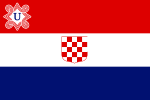 Croatia[9]
Croatia[9] Denmark[9] (occupied by Germany since April 1940)[10]
Denmark[9] (occupied by Germany since April 1940)[10] Finland[9] (co-belligerent against USSR from 25 June 1941)[11]
Finland[9] (co-belligerent against USSR from 25 June 1941)[11].svg.png) Germany[9]
Germany[9].svg.png) Hungary[9]
Hungary[9]_crowned.svg.png) Italy[9]
Italy[9].svg.png) Japan[9]
Japan[9]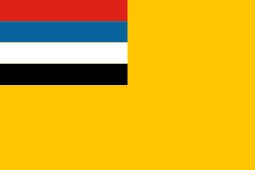 Manchukuo[9] (Japanese-occupied region of China)
Manchukuo[9] (Japanese-occupied region of China).svg.png) Reorganized National Government of China (Japanese puppet state)[9]
Reorganized National Government of China (Japanese puppet state)[9] Romania[9]
Romania[9]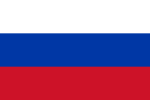 Slovakia[9]
Slovakia[9].svg.png) Spain[9]
Spain[9] Turkey[12] (see German–Turkish Non-Aggression Pact)
Turkey[12] (see German–Turkish Non-Aggression Pact) El Salvador[9] (fascist country of Central America)
El Salvador[9] (fascist country of Central America)
Denmark in the pact
The government of occupied Denmark demanded four exemptions to make clear they took upon themselves no military or political obligations, that the only actions against communists would be police enforcements, that the actions would apply only to Denmark's own territory, and that Denmark remained a neutral country. The German Foreign Minister Joachim von Ribbentrop was furious and in a fit threatened the Danish Foreign Minister Erik Scavenius with arrest. In the end Ribbentrop settled down and the Danish addendum was accepted as a secret one with only a few minor changes. The secrecy was the German demand, to avoid diluting the propaganda effect; this apparent full participation damaged Denmark's reputation as a "neutral" country. Several Danish diplomats stationed in Allied countries decided to distance themselves from the government after the signing.[13] The Danish police had already on their own initiative arrested and detained hundreds of Danish communists without charge on 22 June 1941 and later on 20 August they deported around one hundred of them to the Horserød camp. With the signature of the Anti-Comintern Pact, which was made retroactive, the Danish government officially justified these arrests, but the prisoners were never put before any trial and 150 were later deported to the Stutthof concentration camp by the Gestapo in 1943.[14]
See also
- Battles of Khalkhin Gol between Japan and the Soviet Union (1939)
- Japan-Soviet relations in WW II before August 1945
- Pact of Steel
- Sino-German cooperation until 1941
- Soviet–Japanese Neutrality Pact of April 1941
- Tripartite Pact
References
- ↑ Presseisen, Ernst (2013). Germany and Japan: A Study in Totalitarian Diplomacy 1933–1941. Springer. p. 237.
- 1 2 3 4 5 6 7 8 9 Weinberg, Gerhard (1970). The Foreign Policy of Hitler's Germany Diplomatic Revolution in Europe 1933–36. Chicago: University of Chicago Press. pp. 342–346. ISBN 0226885097.
- ↑ Spector, Robert Melvin (2005). World Without Civilization: Mass Murder and the Holocaust, History, and Analysis. Lanham: University Press of America. p. 257. ISBN 0761829636.
- ↑ Greenwood, Sean. The Phantom Crisis: Danzig, 1939. pp. 225–246.
- ↑ The Origins of the Second World War Reconsidered edited by Gordon Martel, Routledge: London, United Kingdom, 1999 page 232.
- ↑ Anna Cienciala: Poland in British and French Policy in 1939: Determination To Fight-or Avoid War? pages 413–433
- ↑ The Origins of The Second World War edited by Patrick Finney, Edward Arnold: London, United Kingdom, 1997 page 414.
- ↑ Gerhard Weinberg: The Foreign Policy of Hitler's Germany Starting World War II 1937–1939, University of Chicago Press: Chicago, Illinois, United States of America, 1980, p.p. 558-562
- 1 2 3 4 5 6 7 8 9 10 11 12 13 14 Osmańczyk, Edmund (2002). Encyclopedia of the United Nations and International Agreements. Taylor and Francis. p. 104. ISBN 0-415-93921-6.
- ↑ Henning Poulsen, “Hvad mente Danskerne?” Historie 2 (2000) p. 320.
- ↑ Lavery, Jason Edward. The history of Finland. Greenwood Press. p. 126.
- ↑ "Türk-Alman Dostluk Paktı İmzalandı"
- ↑ Kaarsted, Tage (1977). De Danske Ministerier 1929–1953. Copenhagen. pp. 173 ff. ISBN 8774928961.
- ↑ "Kommunistlejren [The Communist Camp]". Folkedrab.dk (in Danish). Danish Institute for International Studies (DIIS). Retrieved 1 March 2016.
External links
- Statement by Ribbentrop on the Declaration of War on the Soviet Union 22 June 1941
- The text of the Anti-Comintern Pact
- The text of the Supplementary protocol of the Pact
- The text of Italian participation to the Pact
- The significance of the Anti-Comintern Pact (Japanese) – lecture texts of Yōsuke Matsuoka, printed in 1937
